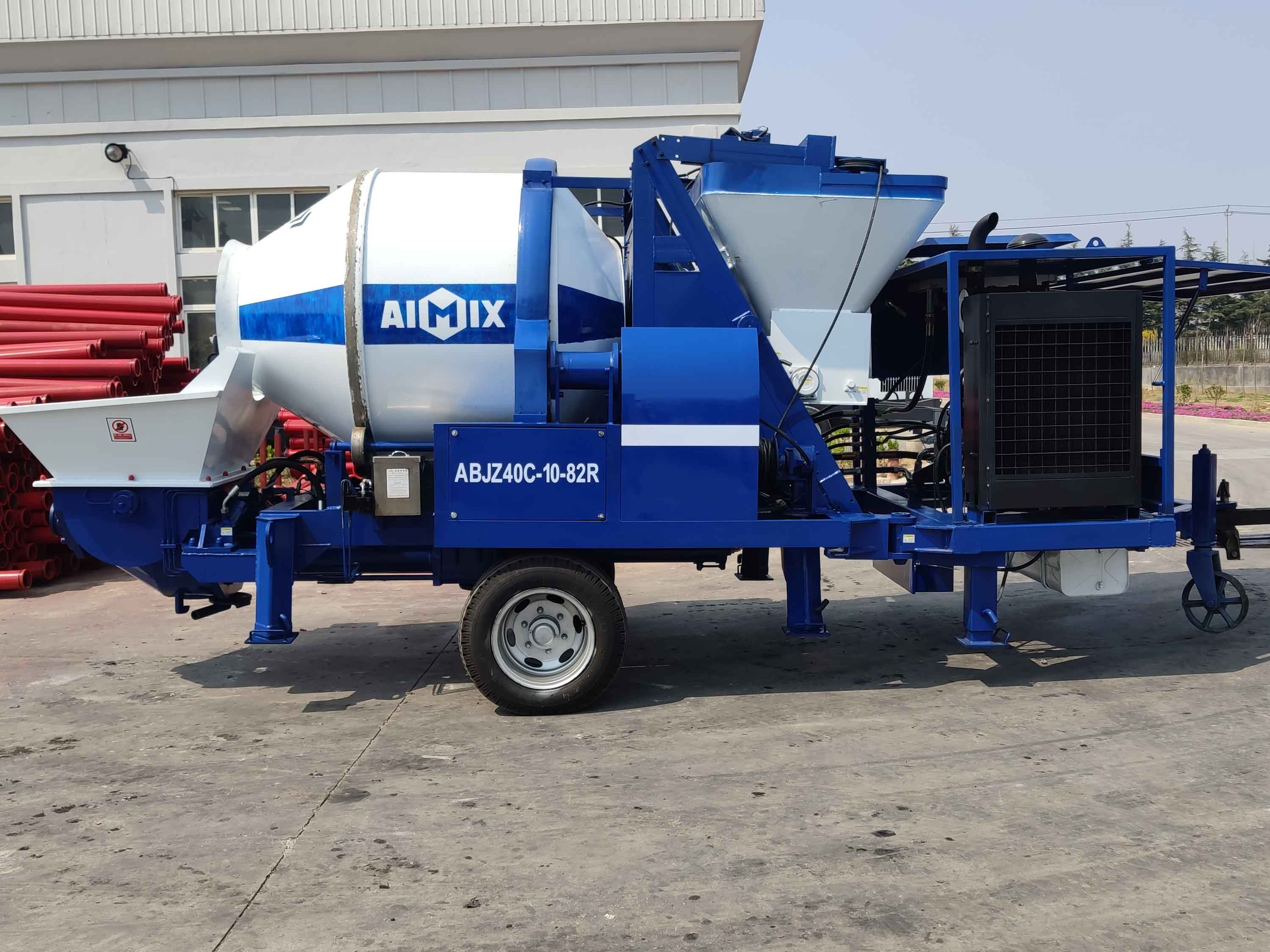The need for concrete pumps has risen steadily lately, due to the rise of construction projects that need large amounts of concrete. However, the cost of concrete pumps has remained relatively stable, in spite of the increased demand. Simply because the fee for manufacturing concrete pumps has not yet changed significantly, and competition among manufacturers has kept prices from rising. For that reason, you can expect to pay between $2000 and $20,000 for the concrete pump, depending on the features and processes in the pump you choose.
Types of concrete pumps
There are 2 main kinds of concrete pumps: boom pumps and line pumps. The prices of your pumps vary according to the sort of pump you decide on.

-
Boom pumps - Boom pumps are truck-mounted concrete pumps which have a multi-section folding boom. The boom is telescopic and can reach a higher altitude across the forms where concrete is being placed. Usually, boom pumps of AIMIX websites use a horizontal reach of approximately 61 meters (200 feet) and a vertical reach as high as 18 meters (59 feet). These can be more expensive than line pumps and you will definitely mostly obtain them in huge construction sites where tons of concrete will be required each day.
-
Line pumps - Line pumps are employed to pump concrete along a line, as an alternative to up and over a hurdle. They can be used to pump concrete into patios, walkways, and other horizontal surfaces. You may also utilize them to pump concrete into vertical surfaces, like walls and columns. They are usually powered by gasoline or diesel engines, and utilize a hydraulic system to operate the pump. The pump itself is attached to a trailer, rendering it very easy to move from a single construction site to another.
Main parts of a concrete pump
-
Piston - A piston is accountable for moving the concrete through the pump. It remains mounted on a rod that passes through the centre of the pump. The concrete is loaded into the pump towards the bottom of your piston and as the piston moves up, the concrete is pushed through the middle of the pump and out throughout the hose. The hose then offers the concrete to where it can be needed.
-
Valve manifold - The valve manifold regulates the flow from the fluid within the pump. Its main function is to make sure that concrete is delivered with a consistent rate and pressure. The valve also prevents concrete from backflowing in the pump(cuanto cuesta una bomba de concreto nueva).
-
Throttle control - The pump even offers a throttle control that regulates the flow of concrete and prevents the concrete from flowing too fast and causing pressure build-up from the pipes. It allows the operator to control the flow of concrete so that it may be put where it can be needed.
-
Cycling circuit - The cycling circuit consists of a combination of valves and pipes that circulate the concrete and water mixture from the pump. By regulating the flow of concrete and water, the cycling circuit enables you to maintain a consistent temperature preventing the pump from overworking find out this here: https://aimixgrupo.com/bomba-de-concreto-colombia/.
Concrete pumps really are a valuable part of construction equipment that can save money and time on many projects. They can be especially useful when pouring concrete in difficult or dangerous locations. Getting one will be helpful to your construction business.


Comments
No comments yet. Be the first to react!